Depending on their understanding of the task, some find removing wheel bearings to be quite a task especially when they lack the necessary tools. This guide will help explain the process step by step while at the same time demonstrating the ease of use and productivity through Construction Made Easy’s puller tool, which is excellent for stubborn wheel-bearing removals. Irrespective of whether you are an experienced mechanic or a person who is more fond of doing things by himself, this guide will give you useful information along with practical advice and a sequential procedure on how to remove wheel bearings efficiently. In the end, you will understand how simple it actually is and, at the same time, why this puller tool from Construction Made Easy is so helpful when someone is trying to maintain a car.
What is a Harbor Freight wheel bearing puller, and why do I need one?
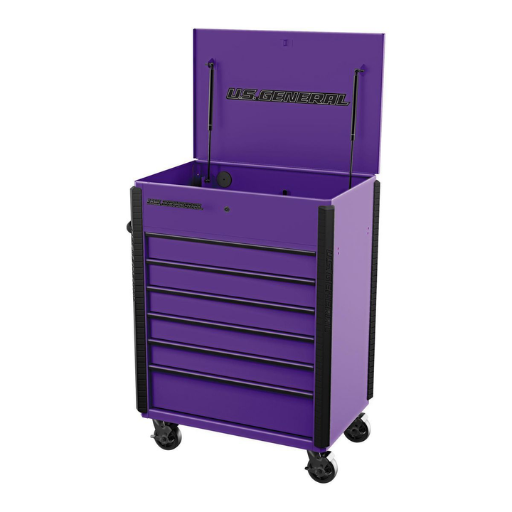
The wheel bearing puller that can be purchased from Harbor Freight is a specialized tool that has been made to remove the wheel bearings with minimum harm to the components surrounding it. It’s well-built, and it serves the purpose of both specialized people and DIY enthusiasts. One of its functions is to quicken the removal process while ensuring that accuracy is achieved. That way, a lot of costly blunders can be avoided by purchasing this device, which would help with the task effortlessly and precisely.
Understanding wheel bearings and their importance
it isn’t difficult for me to say that wheel bearings are critical components which allow any vehicle to operate smoothly, safely, and in a manner of without any difficulty. They serve the purpose of minimizing friction between the axle and the wheel, making for easy rotation and distribution of the vehicle’s weight while it is in motion. In the absence of adequate working wheel bearings, issues such as decreased performance, strange sounds, and safety concerns would be prevalent. The significance of these parts is hard to understate as they allow an automobile to operate dependably while providing a solid link from the wheels to the rest of the machine. Regular servicing or timely changes of the wheel bearings will not only help you avoid expensive damages but will ensure the vehicle is in prime operating condition.
Benefits of using a Harbor Freight wheel bearing puller
Harbor Freight wheel-bearing puller is a game changer. The tool is rather easy to use, and such a tedious task of extracting the wheel bearings would be made easier. The materials it is made of are able to ensure the required level of performance. Its design is such that the components around the affected one minimize the risk of being damaged during the removal process. Not only does it save time, but it also saves money using which you could have gone for expensive mechanic services. So, this puller is something that every professional mechanic should have in their toolbox if they are looking for efficiency, durability, and practicality.
Types of wheel bearing pullers available at Harbor Freight
Here at Harbor Freight, we have a selection of wheel bearing pullers that can be used for a vast number of applications. Below are the major types they come in and their main characteristics:
- Slide Hammer Bearing Pullers
These are multipurpose tools for prying out press-fit or difficult-to-displace bearings. The slide hammer applies intense pulling force and is best suited to those applications that involve tough bearing removal. This type is also effective on internal and external bearings of different sizes.
- Internal Bearing Pullers
As the name suggests, internal bearing pullers are able to attach to the inside of a bearing or a bushing. They are equipped with expansion collets that grip the inner surface and are designed to allow the puller to perform without causing harm to the bearing encasement.
- External Bearing Pullers
Internal bearing pullers are engaged for the pressing of bearings when placing them on shafts, whereby the bearing turns the internal expansive collets shaft of the external bearings towards the bearing encasement allowing it to be removed easily.
- Hub and Bearing Separator Kits
These kits form a succinct package for the removal of both hubs and bearings. Most of them come with either disc springs or separator plates that allow for smooth detachment of wheel hubs or bearings through the use of forcing screws or threaded rods.
- Specialized Automotive Bearing Pullers
These pullers are designed specifically for uses such as compact vehicles, SUVs, or pickup trucks. Localization of design is an important feature that offers promising options for performing difficult tasks.
Every kind of wheel bearing puller offered by Harbor Freight has built-specific repair work, and you have to choose the appropriate one according to bearing size, bearing type, and the bearing position you want to work on. If you have any doubts about the options, keep in mind the dimensions, the access space for the bearing, or whether you’re removing an internal or external bearing. Whether for professional use or DIY repairs, we’ve got a puller to match your requirements!
How do I choose the right Harbor Freight wheel bearing puller for my vehicle?
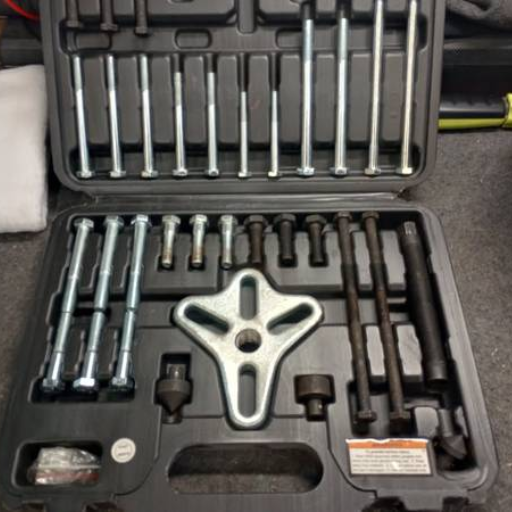
To select the appropriate Harbor Freight wheel bearing puller, it will not be lost on the buyer that their specific needs are critical in making the selection. From my experience, I always start by assessing the type and size of the wheel bearing I’m dealing with. In case the area is restricted, then a puller of small size is chosen, which is able to serve its purpose without any inconvenience. When working with larger or more stubborn bearings, I use a heavy-duty puller since it has a stronger grip and more pulling force. You should also be mindful when replacing either an internal or external bearing since some pullers are capable of working on only one or the other. These are some of the great tools available,e and knowing the correct one saves time and gets the job done the right way.
Identifying your vehicle’s wheel bearing type
Whenever I need to identify the type of angular contact bearing within the wheel of a vehicle, the first step involves examining the wear and specifications of that particular vehicle. The majority of such vehicles are fully fitted with sealed bearings, which are often described as easier since they come in a single piece that is non-dissembleable and does not require any maintenance. However, older vehicles more frequently relied on a tapered roller bearing or a ball bearing, both serviceable and encapsulated in a part such as a hub assembly. The most reliable method that my clients startlingly have time and time again told me is texting the owner’s manual or, rather, seeking out a repair database catered specifically for their vehicles. Otherwise, if possible and accessibility is provided, adjusting to the bearing assembly itself can help in understanding its mechanics and maintenance. Over the years, I, for instance, learned that focusing on these details greatly reduces the amount of trial and error and guarantees that the correct instruments and spare components are in place.
Comparing different Harbor Freight puller sets
The primary application and the difficulty level, however, are the most critical elements based on which one can decide upon a specific Harbor Freight puller set when comparing different sets. For turning or fixing bearings a three jaw puller set gets the job done easily, efficiently, and effectively. Sometimes, more force is needed to remove deeply embedded bearings, in which case the hammer with a slide puller set is useful. When handling external and internal pulling jobs, the reversible puller set is easy to use as it has two pulling configurations. Look out for the load rating or capacity, the number of jaws or their configuration, and finally, the tool’s material for durability and suitability for the task.
Considering quality and price factors
Tools high in grade often command a high price, and so, when investing in any tool or equipment, I would recommend looking into tools that feature a high grade of materials, instead of looking for the lowest price. By only searching for the lowest priced tools, a person does not take into account that over time the tool will lose its functionality, therefore it will have to be replaced with a new one which will lead to spending more money than just buying the more expensive, higher grade material tool. Also, looking at the price, cheap tools will be able to do the bare minimum except only on light loads. Therefore it would be best to focus on finding a reputable company that has a history of producing quality tools that have a track record of being able to withstand heavy loads.
What’s included in the Harbor Freight wheel bearing puller kit?
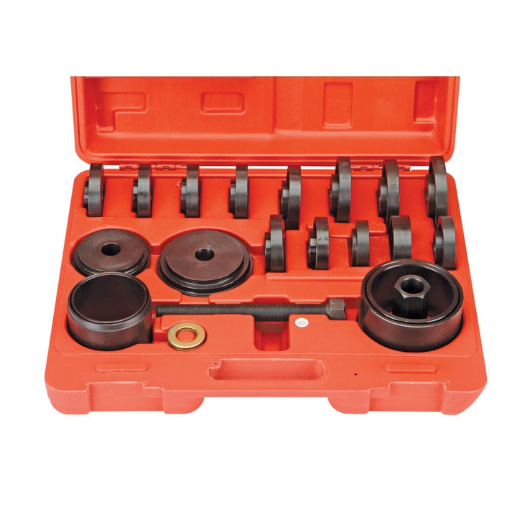
The majority of Harbor Freight’s wheel bearing puller kits are comprehensive in scope and allow wheel bearings to be removed and replaced in an economical way. Considering the damage risks associated with using such parts, here’s what’s included in the kit:
- Bearing Adapter Plates – These plates are made to fit different sizes of wheel bearings and, so, different vehicles. The adapter plates assist in holding the wheel bearing puller firmly during the removal and installation procedures.
- Center Shaft – The center shaft performs as a part of the force applied during a pulling operation. It is designed to withstand sufficient amount of tension, hence it is faithful and non-destructive in a tensioned environment.
- Slide Hammer or Pulling Mechanism – This tool provides the required overhauling force to the wheel bearings that refuse to budge. The construction allows the use of specific pressure to carefully break the bond of the bearing without damage.
- Impact-Grade Washers and Nuts – These serve the purpose of securing the whole arrangement as well as maintaining the correct position of the job being pulled or pressed during bearing operations.
- Storage Case – Most of the kits are supplied with a strong well, packed carrying case, which facilitates the storage of all the parts in one place and makes it easy to carry to any location.
Usability and durability are crucial aspects for which each component has been constructed such that there is ease of use, even for professional mechanics and home do-it-yourselfers. Please check the kit specifications if you are working on a specific vehicle to be sure it works for your purposes!
Overview of the 21-piece bearing remover and installer kit
I consider the 21-piece bearing remover and installer kit a must-have for both professionals and enthusiasts who are dealing with repair work related to bearings. Its intelligent configuration allows it to be widely used across a range of applications due to the precision-designed sleeves and adaptors that cater to various bearing sizes. The tough materials used in manufacture are guaranteed to provide impressive durability, even in the most aggressive of uses. What this kit is known for is how easy it is to use, for example when removing stuck bearings or when new ones need to be installed, everything works seamlessly and effectively. Complementing the well-designed case, it’s a trusted tool for those in search of an effective and long-term solution in order to undertake bearing jobs without any doubts.
Understanding the function of each tool in the set
Every tool in the bearing kit is unique and indispensable in ensuring that there will be no hitch in the functioning. The pullers are for removing bearings, while the drivers are for installing new bearings, and both tools do the job without damaging the adjacent parts. The handle of the pullers comes in various sizes, and they help in accommodating a different range of sizes while installing or removing the bearing. Also, each tool is made in such a fashion that guarantees proper safety standards are met, accuracy can be maintained, and effort on the user’s part is reduced.
How do I use the Harbor Freight wheel bearing puller effectively?
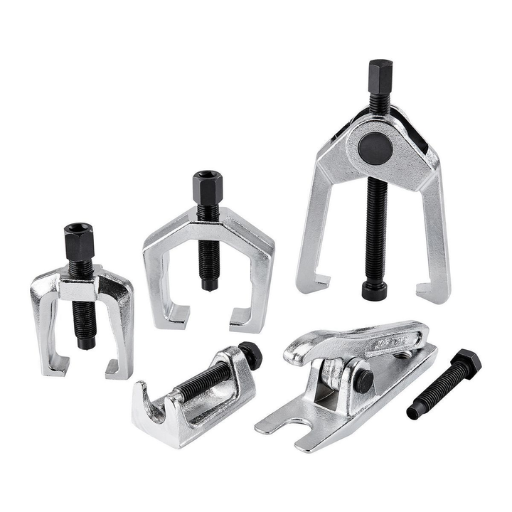
To begin using the wheel bearing puller of Harbor Freight properly, ensure to start by fitting the necessary adapters according to the bearing that you are working on. Fix the puller onto the hub or axle properly and make sure the alignment is correct so as to prevent damage. With the tool, slowly pull in the recommended manner, keeping in mind the manufacturer’s instructions concerning operation. Use protective equipment, and also make sure that the vehicle is stabilized before starting. With the right setup of the tool and operation, the removal process becomes seamless.
Step-by-step guide for front wheel bearing removal
- Prepare Your Workspace
On a personal note, I begin by cleaning and organizing the workspace, avoiding any clutter. For both the vehicle’s and its operator’s safety, I perform a double-check to ensure the vehicle lift is positioned properly and that the wheels are firmly secured with chocks.
- Remove the Wheel
Using a lug wrench, I loosen the lug nuts and fully take off the wheel; this allows me to place the hub and the bearing assembly in clear view.
- Detach the Brake Components
The brake rotor and brake caliper are carefully detached from the wheel hub, ensuring support for the caliper without putting tension on the brake line.
- Access the Bearing Assembly
With the hub being fully visible, I look for the components holding the assembly together which in this case are the axle nut and bolts, I then bring out the correct tools required to remove the bearing assembly.
- Use the Bearing Puller
This is where the bearing puller comes into play, I attach it precisely because I know a slight misalignment can lead to axle or hub damage, then slowly and steadily applying pressure on the puller loosens the old bearing and pops it right off.
- Inspect and Clean
Before installing a new bearing, I make sure to check the hub area for any debris. Following that, I apply thorough sanding to the surface, ensuring a clean and clear installation foundation for the replacement bearing.
Such an intricate aspect ensures that the work done is not only done in a professional manner but renders it a good job with the requisite professional touch.
Tips for using the slide hammer puller tool
- Choose the Correct Attachment
First and foremost, the utmost attention should be given to the selection of the right attachment for the job at hand. Using the slide hammer puller tools, there is always the option of using the gripping jaws, hooks, or even threaded adaptors. However, it is advised that the appropriate attachment is used in order to achieve a perfect fit, which in turn would limit the chances of damaging either the part or the tool being used.
- Secure the Tool Properly
So when using the slide hammer to remove any object, it is imperative that the tool in question is well secured to the object being removed. Take, for example, during the removal process of a bearing; the tool is well placed and secured in a position to stop it from moving around while in use.
- Apply Controlled Force
Controlled movements should be practiced while using the slide hammer so as not to accidentally break the tool or damage the part being worked on. Instead of being overly forceful and aggressive, one can exert gradual force, which is reliable and assists in maintaining better control of the tools.
- Lubrication Can Help
If a particular part is too rusty or possesses any form of penetration, then it is suggested that penetrating oil or lubricant is applied in advance so that the rust is able to soften further. Once lubricated, leave it for a few minutes so that the lubricant seeps in, and then remove the part where the lubricant was applied.
- Inspect Removed Parts
When you accomplish the task of using the slide hammer puller tool, it is very important that you do not forget to assess the queried part and its surroundings. Check for any possible scuffs that would require further tending or fixing.
This is how slide hammer pullers can be operated so as to enhance efficiency and safety while working with these hand tools.
Can I use Harbor Freight tools for both the removal and installation of wheel bearings?
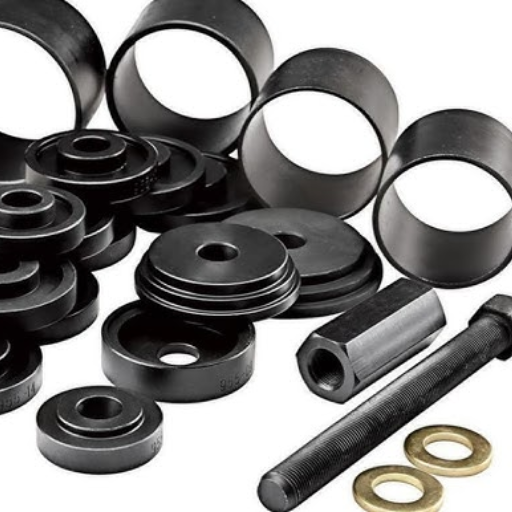
There is no doubt Harbor Freight tools can be used for removing and installing wheel bearings, and I have used them for this reason and haven’t had issues using them either. Their bearing puller sets and press kits are affordably priced and do work if used correctly. But still, it is necessary to make sure that you are using the proper tool for each step and that the proper methods are adhered to in order to avoid damaging the bearing and other components around. Yes, Harbor Freight tools can accomplish this thing, but I always tend to ask people to check the quality of the tools and the tasks they are intended for before so that there are no hindrances during one’s work.
Exploring the installer kit components
The necessary equipment for an installation kit, as a rule, includes such tools as bearing drivers, adapters, and a press that allows fitting and removing of the bearings. All components are designed for a certain function –a rotating driver evenly engages the bearing, an adapter of the corresponding diameter is used, and the press exerts the proper force. Proper application of these tools reduces the chance of damage and achieves the required accuracy, which is important for both professionals and amateurs. Always make sure it is compatible with your specific application for effective performance.
Proper techniques for bearing installation
When it comes to the installation of a bearing, the quality of the installation in terms of prior organization and finesse cannot be overemphasized. To begin with, always make it a point to check the cleanliness of the bearing in the housing because even the smallest of particles is harmful. Also using proper equipment such as correctly sized drivers or presses to install the bearing helps in achieving an even force application to avoid any possible damage to either the bearing or its housing. It is important, however, not to force the rolling elements of the bearing since such an action would shorten its life. A force can only be applied to the matching ring, either the inner or outer race, asking. Alignment verification should likewise be done throughout the process to ensure that there are no uneven stresses when the bearing is finally mounted. From my experience, if these steps are taken, then I am sure that there will always be satisfactory results.
Ensuring correct sizing and fit
In bearing selection, there is an immediate need to respect application-related input data that includes load capacity, speed of rotation, and operational environment in order to achieve correct sizing and fit. One should measure the shaft plus housing dimensions to ensure that they will combine properly and check the tolerances according to the requirements set by the manufacturer. Ensuring proper fit reduces overall loads that might foster loosening and instability as well as chances of vibration, collision, and misalignment, thereby optimizing functionality and durability.
What are some common issues when using a Harbor Freight wheel bearing puller?
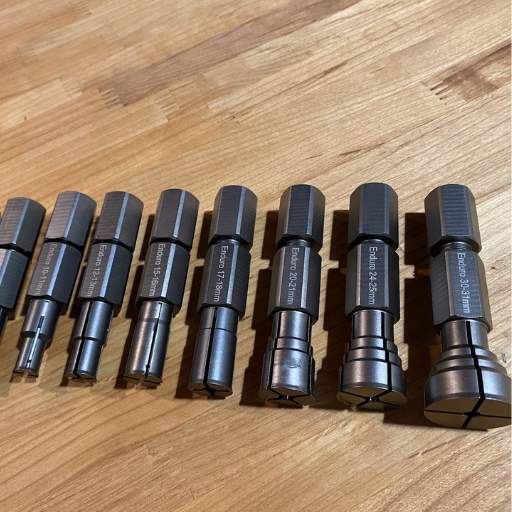
using a Harbor Freight wheel bearing puller has its fair share of issues, but the single best is making sure that the tool handles the bearing securely in place. Sometimes, muscle power alone is quite insufficient with slippage, which has a tendency to happen. It can break either the tool or the bearing itself, which often happens if the jaws are incorrectly aligned or the bearing is stuck too hard. The other issue is rust or grime that may be in the way of removal because it demands more work, like cleaning or applying penetrating oil. Lastly, which is very common, providing an excessive amount of force causes misalignment of the puller, which in turn hampers the extraction process and poses problems for most parts. Proper attention in preparation and slow and steady movement does help alleviate these problems.
Troubleshooting stuck or damaged bearings
To properly deal with stuck or broken bearings, start by spring penetrating oil to gel any rust or contaminant and let it sit for a few hours. Those who use penetrating oil should start by loosening such rust or contaminants and let it sit for hours. Get a wire brush and scrub the area for a smoother bearing insertion. Make sure that the puller is well positioned and its jaws have engaged properly to allow almost no slippage. Balance is very important because abuse may result in the bearing being off-center at extraction, or it may get chipped. If all elements surrounding the bearing are intact and the bearing is still lodged into place, take a gentle blow with a heat application. When everything is done, always remember to figure things out in a sequence, which allows you to stop the tools from jamming and getting damaged.
Maintenance tips for your Harbor Freight puller set
Maintaining your Harbor Freight puller set is very important for both integrity and performance. Through the years, I’ve come to understand that routine upkeep can change everything. I am actually providing here the steps that I employ so that the working of my puller set is never compromised:
- Clean After Every Use
Once I finish any work, I make sure to service the puller components, as they are oftentimes used for more than one job. After possibly pulling, dirt, grease, and other debris are likely to accumulate and need to be cleaned, and to do so, using slightly abrasive cloths is good enough. If there is a substantial amount of gunk, a thin layer of a non-distilled solvent can help. If the tools are kept clean, over time, partings of tools that have the likelihood of rusting and getting worn out don’t get the chance to cut up on much mass.
- Inspect for Damage or Wear
Once the puller has been inspected, I always advise checking every single piece that is made from the set once the cleaning is done. I check for signs of deterioration in the maws, painted areas, joints, and other components that are stressing too much. Identifying faulty pieces at an early stage makes it possible for replacements to be done beforehand making it increase the chances of the puller working without issues.
- Lubricate Moving Parts
In order for an object to be efficiently moved by means of a machine or to function in a smooth manner, applying oil grease or any fluids or solvents to places that rotate, twist, or have a gap in them is a norm. If this is done, the chances of rusting decrease. Furthermore, it reduces friction and allows for unimpeded movement of a machine.
- Store in a Dry Environment
Dry environments and tools have an unbreakable bond as moisture brings about negative effects on the tools themselves. It is likewise recommended to use desiccant packs in addition to storing any set of pullers in a cool, dry environment. For regions with higher humidity, it wouldn’t work and would result in draining out excess moisture.
- Tightening and Calibration Checks
It is normal for parts to slightly loosen over time. So, I undertake an inspection of the bolts and connections periodically to confirm that the puller or any other automated unit is bolted and aligned properly. This not only helps ensure safe functioning but also ensures the accuracy of the puller.
- Replace Worn or Damaged Parts Promptly
In some cases, parts still get worn out, even with regular servicing. As soon as I notice any arcing of components, I get the replacements immediately. Working with mediocre or poor parts can compromise or completely fail the job or even spark accidents.
Following these steps, I have maintained an efficient working condition for the Harbor Freight puller set for years. Thus, such regular maintenance not only reduces expenses in the future but also guarantees that the instrument is prepared to operate effectively whenever I call for it!
How does the Harbor Freight wheel bearing puller compare to other brands?
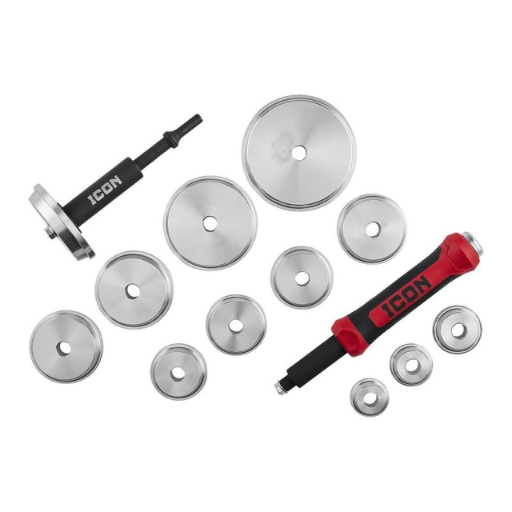
It is my opinion that the wheel bearing puller bearing the Harbor Freight mark is a robust and economical product when compared to other pullers available in the marketplace. Yes, it lacks the expensive finishing touches and high-grade materials used in more professional tools, yet it provides efficient service for the majority of conventional uses. I’ve come across such a tool, where its size and shape were designed to be useful, and all parts needed to perform such a tool were present. Although the model from Harbor Freight is less expensive, it requires a bit more attention in order to survive longer than the more costly brands, but the quality that it provides makes it the wisest choice for amateurs and practitioners with low budget requirements.
Comparing features with professional-grade tools
In comparison with professional tools, such as Ranger, Torque, or Soucy, the differences in performance of the Harbor Freight wheel bearing puller come down to the material and construction only. Professional tools tend to have better alloy grades, which provide increased strength and durability for heavy-duty or frequent use. Sometimes, their tools also have enhanced designs for superior accuracy and ease of use. However, for non-complicated tasks and regular use, a lower-cost puller from Harbor Freight provides dependable service. But even though it lacks the advanced engineering of its higher quality counterparts, it is still a reasonable option for users who require a tool for economical use, in return, sacrificing the scale of attainable capabilities.
User reviews and experiences
I believe the Harbor Freight wheel bearing puller does what it is supposed to do at the price it is being sold for. A lot of people have said it’s inexpensive and easy to use, which does make sense, considering it takes care of normal tasks quite well. I’ve seen some reviews talk about it requiring more adjustments and some care, but given the price range, these notes are understandable. In general, the sentiment around it, especially among loyal customers and DIYers, seems to be rather favorable. Ofcourse, there exists a population of precision workers, who would rather a more sophisticated tool but for basic-aesthetic jobs, it is a great substitute.
Reference
- Club Touareg Forum: Discussion on Harbor Freight Bearing Puller Tool
- Harbor Freight: Front Wheel Drive Bearing Remover and Installer Kit
- Audizine Forum: Review of the Harbor Freight Wheel Bearing Tool
Frequently Asked Questions (FAQs)
Q: What is the Harbor Freight wheel bearing puller tool set?
A: The Harbor Freight wheel bearing puller tool set (item 66829) is a comprehensive kit designed for front wheel bearing replacement and rear axle bearing removal. It includes various adapters and a slide hammer puller tool, making it a versatile product for bearing maintenance tasks.
Q: How does the Harbor Freight tool set compare to other bearing replacement tools?
A: The Harbor Freight tool set 66829 is known for its quality and affordability. It offers comparable functionality to more expensive brands, making it a popular choice among DIY enthusiasts and professional mechanics for wheel bearing replacement with Harbor Freight tools.
Q: Can I use this tool set for both front and rear wheel bearings?
A: Yes, this versatile kit includes front wheel bearing adapters and a rear axle bearing puller set, allowing you to perform bearing replacement with Harbor Freight tools on both front and rear wheels of various vehicle makes and models.
Q: Is there a video guide available for using this Harbor Freight tool?
A: While Harbor Freight doesn’t produce official video guides, many users and automotive enthusiasts have created helpful tutorial videos demonstrating the use of this tool set for wheel bearing removal and replacement. You can find these videos on popular platforms like YouTube.
Q: What’s included in the Harbor Freight wheel bearing puller tool set?
A: The set typically includes a slide hammer puller tool, various-sized adapters for different bearing sizes, a remover and installer kit, and other necessary components for wheel bearing replacement. The exact contents may vary, so it’s best to check the product description when you shop for this item.
Q: How does the Harbor Freight tool compare to the Maddox bearing puller?
A: The Harbor Freight tool set 66829 is often considered a more affordable alternative to premium options like the Maddox bearing puller. While the Maddox may offer some additional features, many users find that the Harbor Freight tool provides excellent value for bearing maintenance tasks.
Q: Can this toolset be used for other automotive maintenance tasks?
A: While primarily designed for wheel bearing removal and installation, many of the components in this kit can be useful for other automotive tasks. The slide hammer puller tool, for example, can be used for various pulling applications beyond just wheel bearings.
Q: Are replacement parts available for this Harbor Freight tool set?
A: Harbor Freight typically offers replacement parts for their tools. If you need to replace a specific component of the wheel-bearing puller tool set, it’s best to contact Harbor Freight customer service or visit their shop to inquire about the availability of individual parts.
